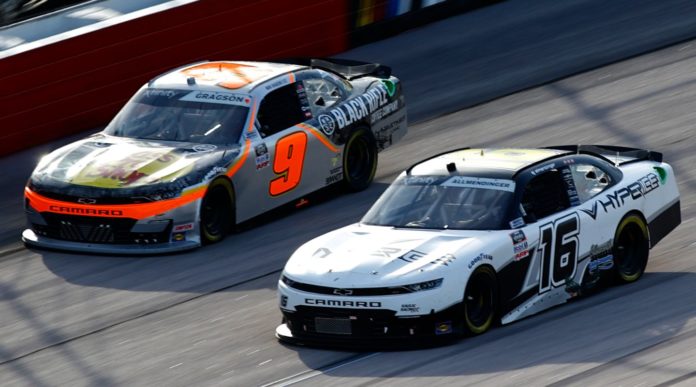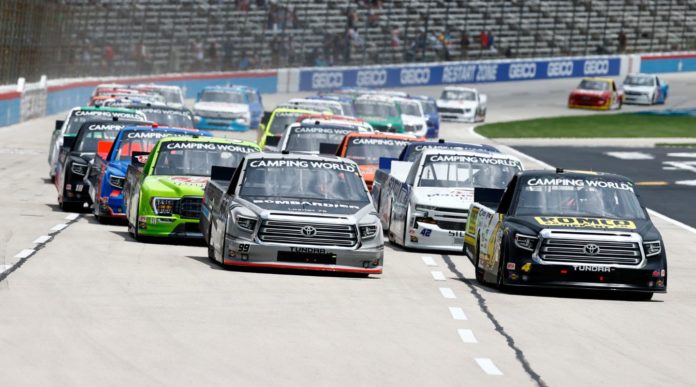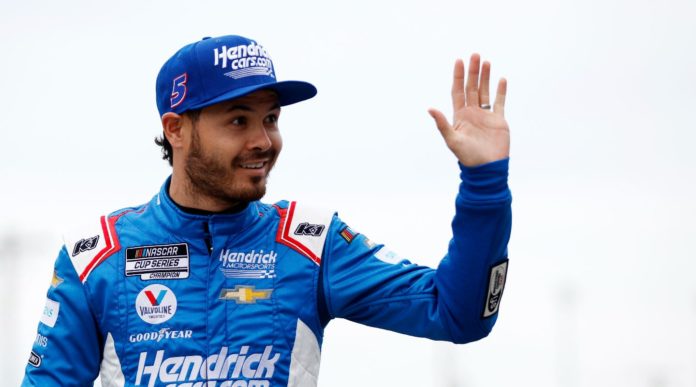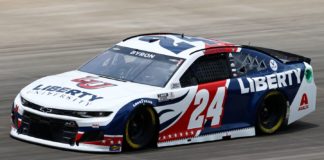Welcome to another season of names being made in the NASCAR Xfinity Series! Last season ended with Daniel Hemric surprisingly earning his first win ever in NASCAR and consequently, the championship. Though he will no longer be driving for Joe Gibbs Racing, his Kaulig Racing team is sure to be a contender in 2022.
A lot of talent has moved on to the Cup Series, but even more talent has decided to run the Xfinity Series full-time, including 2021 race winners Josh Berry and Ty Gibbs. Truck Series stalwarts, Sheldon Creed and Austin Hill, will also be running full-time, both for Richard Childress Racing. And with 47 cars entered for the 38 open positions at the Daytona season opener, this is arguably the most competitive the Xfinity Series has ever been!
Seasons and drivers may change, but numbers never lie. Let’s make 2022 a profitable year by seeing what can be gleaned from last year’s data.
As also mentioned in my Truck Series article (click here), over the past two years, pricing was affected by starting position due to the lack of qualifying. It was determined mainly by points standings and the most recent race, so DraftKings was able to release pricing AFTER the starting lineup was announced. With qualifying returning this season, these trends may not hold true. However, it is expected that, for the most part, the good carswill start near the front and the bad ones will start in the back, so there is some utility to the information below.
General DFS Lineup Construction Rules For The NASCAR Xfinity Series
- Roster at least 1 driver priced less than $6k (90.9% of optimals), but no more than 1 below $5k (93.9% of optimals)
- Roster at least 2 drivers priced at or above $9k (93.9% of optimals), with at least 1 of them above $10k (87.9% of optimals)
- Target a minimum of 5x value for each driver (95.4% of drivers; 75.8% of optimals)
- Spend at least $49k of salary (81.8% of optimals)
- Roster at least 2 drivers starting 30th or worse (75.8% of optimals)
- If a driver is priced above $13k, roster them. (100% of optimals in this scenario)
Again, let me stress this point: Scoring in NASCAR DFS is the same across the series, but these rules are specific to the Xfinity Series. The trends and drivers are not the same as the Cup Series, so DFS lineups should be individualized as well!
While these rules are not absolute, they can provide a framework when building lineups, especially in cash games. In addition to the general lineup construction rules above, there are trends that can be exploited based on track type. NASCAR can differ drastically depending on the race. Thus, winning lineups will likely employ different strategies and builds as determined by the track.
Drafting Tracks (Superspeedways)
- Don’t be afraid to leave salary on the table! Two of the optimal lineups on this track type last year spent $49900 and $50000, while the other two left over $7000 on the table. The wrecks at these tracks do not tend to take out as many of the top teams in the Xfinity Series, but it can definitely happen. If multi-entering, build lineups for both scenarios.
- Roster 3 or more drivers starting 30th or worse. The only superspeedway race that did not follow this trend was the rain-shortened spring race at Talladega. Drivers starting farther back have the most upside due to place differential points they can earn. If they can avoid the wrecks, they will be in prime position to capitalize with a good finish at the end of the race.
- Roster no more than 2 drivers starting in the top 15. When targeting drivers starting in the top 15, try to pair teammates if possible. For instance, In 5 of the last 8 races at Daytona and Talladega, Kaulig Racing has had multiple drivers make the optimal lineup due to their willingness to team up and draft with one another during the race.
- Only roster drivers priced above $10k if they can provide place differential points. 3 of the 4 races in 2021 where the optimal lineups featured no drivers priced above $10k came at superspeedways. It’s just not a winning strategy to fill in a high-priced, well-known driver just because there is extra salary to do so.
Intermediate Tracks
- Roster no more than 2 drivers starting in the top 10. 12 of the 13 optimal lineups had two drivers or less starting in the top 10. Typically, when targeting these drivers, the potential to obtain dominator points through laps led and fastest laps is essential since their place differential upside is limited.
- Target 5.5x value from each driver. 73 of the 78 drivers appearing in optimal lineups at intermediate tracks achieved 5.5x value. Four of the five who did not still scored over 40 DK points and were priced near or above $10k, making it harder to hit value without domination. For what it’s worth, optimal lineups at high tire wear tracks consisted entirely of drivers hitting 5.5x value.
- Joe Gibbs Racing and JR Motorsports drivers should be the main source of dominator points. Despite Kaulig Racing’s success in 2021, their drivers made an appearance in only 3 of the 13 optimal lineups at intermediate tracks. Meanwhile, JGR and JRM were each represented in 10 lineups. Austin Cindric made 4 optimals in his Penske Racing #22 Ford, which will not be running this year. It could open the door for Kaulig to take a big leap, or the other two powerhouses will continue to dominate.
Short Tracks
- Target 6x for all drivers, unless priced below $5000. The sheer amount of dominator points available and attrition seen with minor crashes allow for higher cash lines at short tracks. 87.5% of drivers in the optimal lineups at tracks measuring 1-mile or less achieved 6x value. On two instances, Matt Mills was priced at $4700 and snuck into the optimal lineup despite not scoring more than 30 DK points in either race. His cheap price yielded the salary relief needed to cram in all of the dominator points up top. In these races, prioritize potential for laps led and fastest laps!
Road Courses
- Always consider Ty Gibbs and AJ Allmendinger as potential race winners. Though no trends emerged that were different from the general lineup construction rules listed above, identifying the winner is essential at road courses. Ty Gibbs was optimal in 3 of the 6 road course races he was in, ranking top 10 in driver rating in each of the others despite poor finishes. AJ Allmendinger made 4 optimal lineups and is renowned for his prowess on this track type. Austin Cindric was the other dominant driver at these tracks, but he has moved up to the Cup Series in 2022. These are the best two road course racers in the Xfinity Series.















